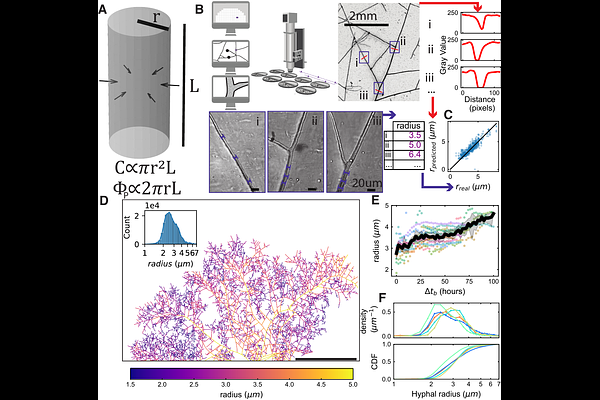Carbon-phosphorous exchange rate constrains growth of arbuscular mycorrhizal fungal networks

Carbon-phosphorous exchange rate constrains growth of arbuscular mycorrhizal fungal networks
Bisot, C.; Galvez, L. O.; Kahane, F.; van Son, M.; Turcu, B.; Broekman, R.; Lin, K.-K.; Botenbal, P.; Winter, M. K.; Kokkoris, V.; West, S. A.; Godin, C.; Kiers, E. T.; Shimizu, T. S.
AbstractSymbiotic nutrient exchange between arbuscular mycorrhizal (AM) fungi and their host plants varies widely depending on their physical, chemical, and biological environment. Yet dissecting this context dependency remains challenging because we lack methods for tracking nutrients such as carbon (C) and phosphorus (P). Here, we developed a new approach to quantitatively estimate C and P fluxes in the AM symbiosis from comprehensive network morphology quantification, achieved by robotic imaging and machine learning based on roughly 100 million hyphal shape measurements. We found that rates of C transfer from the plant and P transfer from the fungus were, on average, related proportionally to one another. This ratio was nearly invariant across AM fungal strains despite contrasting growth phenotypes, but was strongly affected by plant host genotype. Fungal phenotype distributions were bounded by a Pareto front with a shape favoring specialization in an exploration-exploitation trade-off. This means AM fungi can be fast range expanders or fast resource extractors, but not both. Manipulating the C/P exchange rate by swapping the plant host genotype shifted this Pareto front, indicating that the exchange rate constrains possible AM fungal growth strategies. We show by mathematical modeling how AM fungal growth at fixed exchange rate leads to qualitatively different symbiotic outcomes depending on fungal traits and nutrient availability.